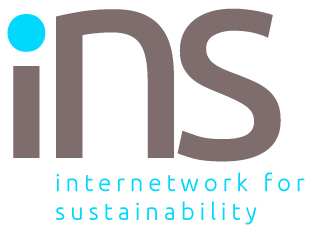
H&M and Zara jeans, hoodies, shorts and socks have been linked to large-scale illegal deforestation, land grabbing, violence and corruption by an NGO investigation that pulled the threads tying fast fashion to a boom in Brazilian cotton production for export.
UK investigative NGO Earthsight spent over a year analysing satellite images, court rulings, shipment records and going undercover at global trade shows to trace nearly a million tonnes of tainted cotton from some of the most notorious estates in Brazil to clothing manufacturers in Asia that are suppliers of the world’s two largest fashion retailers.
Owned by some of Brazil’s richest families, the industrial-scale farms are among the country’s biggest cotton producers. They have a long record of court injunctions, corruption rulings and millions of dollars in fines related to clearances of around 100,000 hectares of Cerrado wilderness. This vast region of dramatic plateaus and lush valleys covers a quarter of Brazil and is home to 5 percent of all the world’s species, including the giant anteater and giant armadillo.
Over half the Cerrado has been cleared for large-scale agriculture, mostly in recent decades. The destruction creates climate impacts equivalent to 50 million more cars on the road each year, the Brazilian government estimates. Hundreds of species now face extinction due to habitat loss. Each year, billions of litres of fresh water are diverted to cotton fields that are doused with 600 million litres of the most poisonous pesticides.
Worsening situation
The situation is getting worse – deforestation rose by 43% last year. Almost all is illegal, cleared by a few mega-estates that represent just one percent of all rural properties. The Cerrado is being sacrificed to industrial farming in order to spare the Amazon, ecologists say.
The ‘smash and grab’ methods used by the biggest estates investigated by Earthsight are typical for export-oriented producers, Earthsight says. Brazil has increased cotton production dramatically in recent decades, almost all in the Cerrado, where it is now routinely grown in rotation with soy. By 2030, Brazil is expected to overtake the US as the world’s largest cotton exporter.
As cotton grew, traditional communities declined. A ruinous mix of corruption, greed, violence and impunity has led to the blatant theft of public lands and dispossession of local communities (ES footage). It is rare for large-scale farms not to grab land, local campaigners in one region told Earthsight. People that have lived in harmony with the Cerrado for centuries are forced off their land, blocked from subsistence activities, subjected to surveillance, intimidation and cattle theft by estate gunmen, as well as shootings and other violent attacks on their leaders.
Earthsight tracked 816,000 tonnes of cotton from the investigated estates to 8 Asian firms that sent at least 11 million items of finished clothing and homeware to the Netherlands over twelve months for H&M and/or Zara stores as well as Zara’s sister brands Bershka, Pull&Bear, among others [1]. The goods sent to the West are worth many hundreds of millions of Euros and include apparent best-sellers: items shown at the top of results page following generic searches on retailer websites. Zara and sister brands owned by Inditex have 71 Dutch stores, making up just 1% of its global footprint. But the stores generated 13% of its profits in 2023, making the Netherlands its second most important country globally. H&M has 114 Dutch stores, generating 3% of its global sales.
All the tainted cotton traced by Earthsight was certified as sustainable by Better Cotton (BC), Earthsight found. Most H&M and Zara products are made with BC cotton, making them by far the world’s biggest BC users. Nearly half of all BC comes from Brazil, more than any other country. BC has been accused of greenwashing, secrecy and failing to protect human rights several times in the past. It launched an inquiry in response to Earthsight’s findings, BC said. Coincidentally, its rules were updated on 1 March, but remain riddled with holes, conflicts of interest and weak enforcement. Cotton from land illegally deforested before 2020 can still qualify as ‘better’, even if it was stolen from local communities, Earthsight said.
Earthsight director Sam Lawson said: “While we all know what soy and beef have done to Brazil’s forests, cotton’s impact has gone largely unnoticed. Yet the crop has boomed in recent decades and become an environmental disaster. If you have cotton clothes, towels or bed sheets from H&M or Zara, it is probably stained by the plundering of the Cerrado. These firms talk about good practice, social responsibility and certification schemes, they claim to invest in traceability and sustainability, but all this now looks about as fake as their highstreet window arrangements. It has become very clear that crimes related to the commodities we consume have to be addressed through regulation, not consumer choices. That means lawmakers in consumer countries should put in place strong laws with tough enforcement. In the meantime, shoppers should think twice before buying their next piece of cotton clothing.”
A number of laws to regulate supply chains are in force or soon will be. A new EU Deforestation Regulation forces firms to trace some raw materials back to production that must be deforestation-free and legal, but neglects cotton. The EU’s Corporate Sustainability Due Diligence Directive (CSDDD) should be finalised in April or May. But hardball tactics by several member states mean that most companies will escape the regulation. Despite this, the CSDDD should be passed without delay, Earthsight said, while the Deforestation Regulation needs to be revised to include cotton.
Commercial agriculture and logging are the biggest drivers of deforestation and forest degradation globally. In terms of pressure on land stemming from EU consumption, textiles is second only to consumption of food. Almost all of that pressure happens overseas, and almost all relates to the cultivation of cotton. The biggest culprits are the biggest consumer markets. The EU is the largest importer of clothing in the world, and the US is the second largest.











